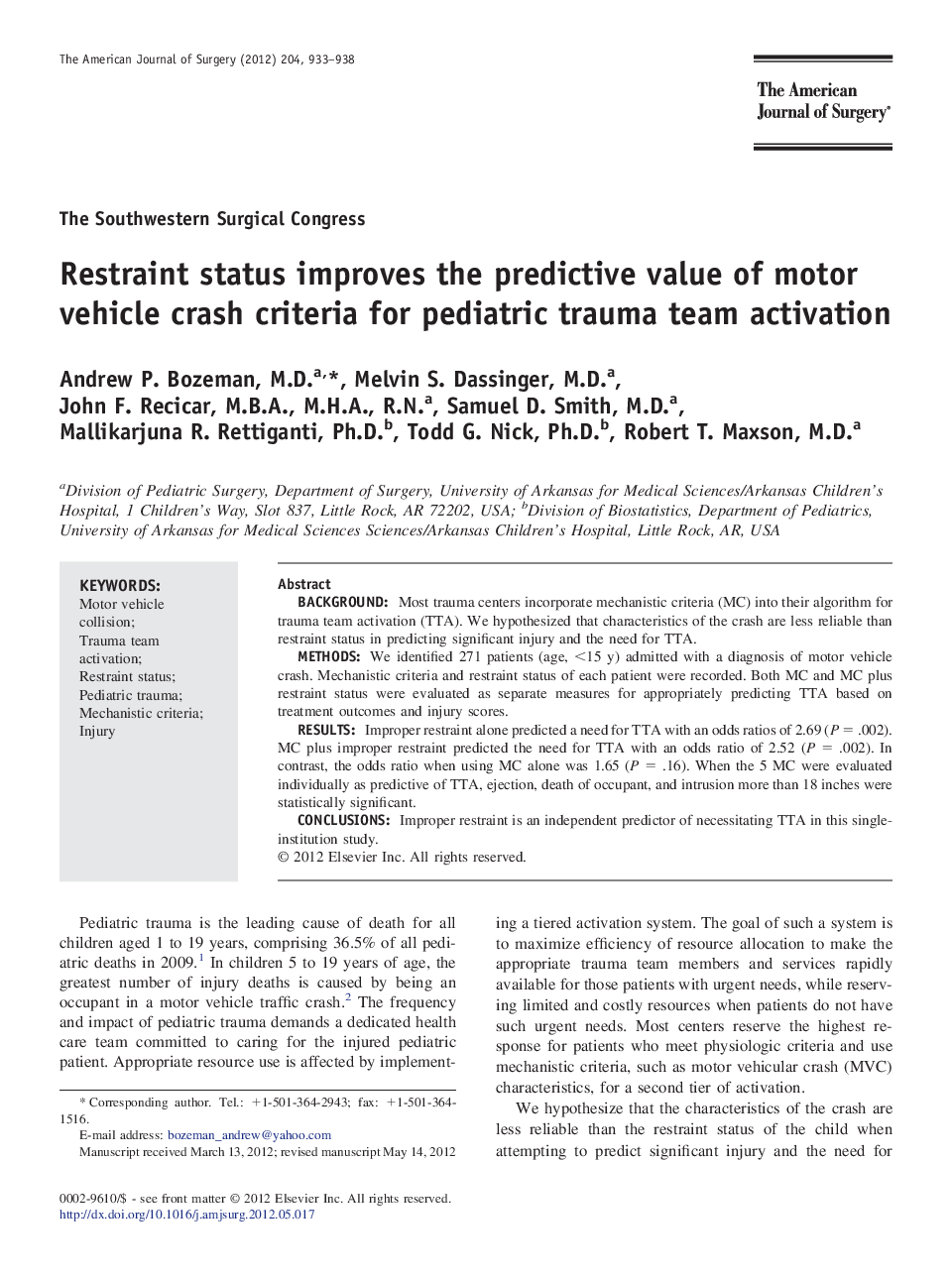| Article ID | Journal | Published Year | Pages | File Type |
|---|---|---|---|---|
| 4279584 | The American Journal of Surgery | 2012 | 6 Pages |
BackgroundMost trauma centers incorporate mechanistic criteria (MC) into their algorithm for trauma team activation (TTA). We hypothesized that characteristics of the crash are less reliable than restraint status in predicting significant injury and the need for TTA.MethodsWe identified 271 patients (age, <15 y) admitted with a diagnosis of motor vehicle crash. Mechanistic criteria and restraint status of each patient were recorded. Both MC and MC plus restraint status were evaluated as separate measures for appropriately predicting TTA based on treatment outcomes and injury scores.ResultsImproper restraint alone predicted a need for TTA with an odds ratios of 2.69 (P = .002). MC plus improper restraint predicted the need for TTA with an odds ratio of 2.52 (P = .002). In contrast, the odds ratio when using MC alone was 1.65 (P = .16). When the 5 MC were evaluated individually as predictive of TTA, ejection, death of occupant, and intrusion more than 18 inches were statistically significant.ConclusionsImproper restraint is an independent predictor of necessitating TTA in this single-institution study.
